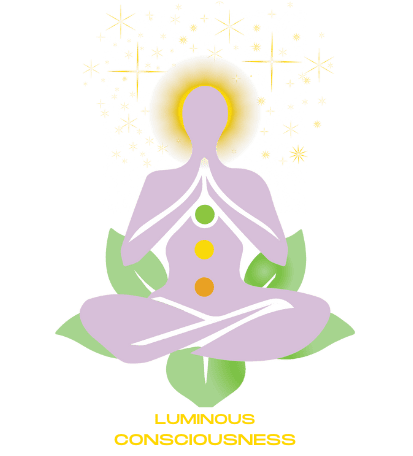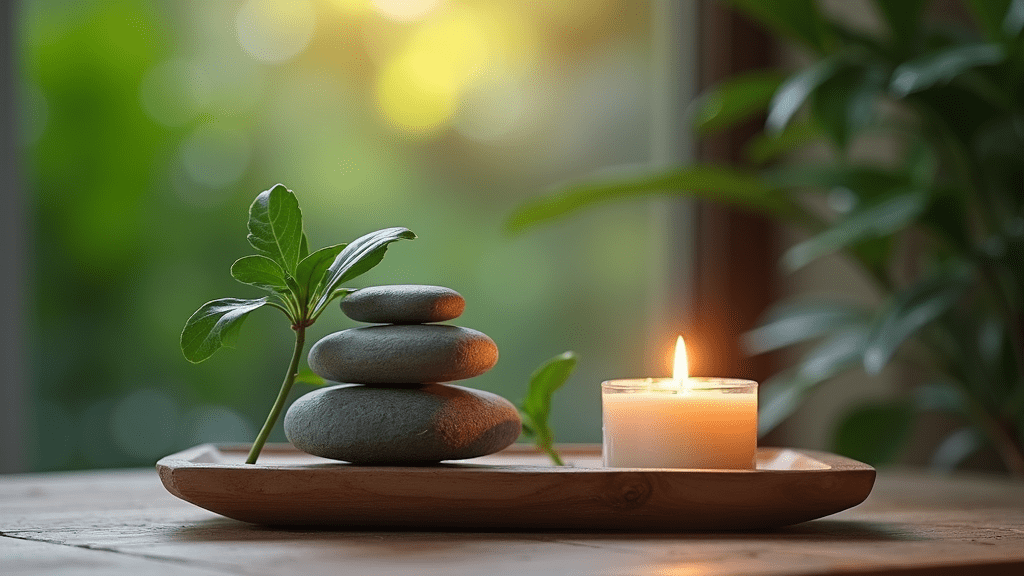Mindfulness meditation is one of those practices I keep recommending to my clients because, honestly, it’s powerful and pretty easy to start. When life throws curveballs, I often turn to mindfulness to quiet the noise and get back to balance. Finding emotional stability doesn’t need elaborate rituals; sometimes, a few minutes of mindful breathing does the trick. If you’re interested in a real-world guide, not just theory, here’s how you can start using mindfulness meditation to bring some peace into your everyday life.

Mindfulness Meditation for Emotional Balance: Why It’s Worth a Try
Emotional balance isn’t about always feeling happy or avoiding tough feelings. It’s feeling your feelings, knowing they’ll come and go, but you don’t have to let them run the show. Mindfulness meditation targets this skill directly. It’s been around for thousands of years, but what’s cool is how much science now backs it up. Studies have shown that regular mindfulness helps lower symptoms of anxiety, boosts your ability to focus, and makes it easier to handle strong emotions.
I like to tell my clients that mindfulness isn’t about emptying your mind, which is just impossible. It’s about noticing what’s already there, gently, without letting it sweep you away. Even a few minutes a day can help your mood, your attention, and your patience with yourself.
Getting Started with Mindfulness Meditation
Starting out is easier than you might think. You don’t need expensive gear, a quiet mountain retreat, or an hour of free time. Just a place to sit and a few minutes daily work well. I usually recommend beginning with short, simple sessions, so you’re more likely to stick with it.
- Find a Spot: Pick somewhere you won’t be interrupted. It doesn’t have to be silent, just comfortable and safe.
- Set a Timer: Two to five minutes is enough when starting out. Longer is fine as you get the hang of it.
- Posture: Sit comfortably but upright. You can be in a chair, on the floor, whatever works.
- Breath as Anchor: Bring attention to your breath as it travels in and out. No need to change it.
This simple setup is usually enough to get my clients started. Most people are surprised at how many distractions pop up, and that’s totally normal. When it happens, just notice and gently return to your breath.
Step-by-Step Guide to Practicing Mindfulness Meditation
- Settle In: Close your eyes if it feels okay. Notice the points where your body touches the chair or floor. These physical sensations help you get grounded.
- Focus on the Breath: Pay attention to the breath as it moves in and out. Some people count breaths or focus on the rise and fall of their chest.
- Notice Distractions: Thoughts, feelings, sounds, or urges to move will come up. Recognize them without judgment, and bring yourself back to the breath.
- Gently Return: Every time your mind wanders (and it will!), just nudge your attention back. It’s like mental strength training.
- End with Kindness: Open your eyes. Take a moment to notice how you feel. Even short sessions like this can help you ground emotions and slow down racing thoughts.
The trick is showing up as you are, not as you think you should be. Some days your mind will wander more. That’s normal, and actually, every time you come back, you’re building the muscle that leads to emotional balance.
Common Roadblocks (and How to Handle Them)
Almost every beginner runs into similar bumps along the way. I’ll go through a few, with the kind of advice I usually give my life-coaching clients.
- Restlessness: Sitting quietly can feel uncomfortable, especially if you’re used to always being busy. Try shorter sessions first. Even 30 seconds counts.
- Frustration With Wandering Thoughts: Some believe their mind is too busy for meditation. Actually, noticing wandering thoughts is part of the practice. Just bring your attention back, and celebrate that you noticed.
- Lack of Time: If fitting practice in seems impossible, try pairing it with daily routines, such as while waiting for the coffee to brew or during your commute (as long as you’re not driving).
- Expecting Instant Calm: Mindfulness can feel subtle at first. Emotional balance builds gradually, like physical strength from regular workouts.
I sometimes remind clients that there’s no “bad” meditation session. Some feel peaceful, others are distracted. Both are useful learning experiences. Getting comfortable with imperfection helps you stick with it longer and get the results you’re after.
Tips From My Own Practice
I used to try meditating for long stretches because I wanted results fast. All I got was frustration. Later, I switched to just five minutes daily, right after brushing my teeth. This routine stuck. Keeping it short and pairing it with something I already do helped mindfulness become part of my day, and I didn’t need heroic willpower to keep it going.
Many people think that a session has to be uninterrupted and super peaceful, but honestly, I’ve meditated on noisy trains or during lunch breaks when my day was chaotic. The key was the commitment to show up for even a short while, regardless of conditions.
Beyond Basics: Tailoring Mindfulness to Your Life
Once you’re comfortable with basic breath awareness, mindfulness really opens up. You can customize it to target what you need most. Here are a few ideas I’ve seen work well with my clients:
- Body Scan: Bring attention to each area of the body in sequence, starting at the toes and moving up. I often use this when stress shows up physically, like tension or headaches.
- Label Emotions: When you feel strong emotions, just label what comes up: “sadness,” “frustration,” “anxiety.” This helps you get some distance between you and the feeling.
- Mindful Movement: Some people (me included) find it easier to focus while walking or stretching. Bringing awareness to the physical sensations makes these activities meditative.
- Sensory Check-In: Focus on one sense at a time, such as sounds, smells, or even the feeling of air on your skin. This can be calming, especially in tense moments.
You don’t have to meditate sitting still with your eyes closed. If you find mindfulness easier during daily routines, like washing dishes or waiting in line, that works too. The key is noticing what’s happening in the moment without judging or trying to fix it. Over time, you’ll notice opportunities to integrate moments of mindfulness throughout your day: when you’re stuck in traffic, listening to music, or even sipping your morning coffee.
What Mindfulness Meditation Looks Like in Daily Life
The big payoff comes when mindfulness spills into regular living. I’ve noticed I catch negative self-talk or anxious spirals much faster now. With practice, responses become less reactive and more thoughtful. Here’s how mindfulness meditation often plays out for people:
- Better Emotion Regulation: You become more aware of your triggers and can pause before reacting. Pausing for even a few seconds can be huge in preventing a small irritation from blowing up into a bigger problem.
- Increased Patience: It’s easier to sit with difficult feelings instead of rushing to escape them. This lets you process them rather than stuff them away.
- More Calm in Stressful Moments: Even five mindful breaths can make a Monday feel less overwhelming. Sometimes, noticing a racing heart or clenched jaw is enough to break the stress loop.
Mindfulness isn’t about constantly feeling “zen.” It gives you space to choose your response so tough emotions don’t knock you off balance so easily. You’ll probably notice other positives too, like better sleep, more focus during work or study, and warmer relationships, since it’s easier to be fully present with the people you care about.
Frequently Asked Questions
Here’s what clients most often ask about mindfulness meditation:
Question: Do I need to meditate daily to get benefits?
Answer: Even practicing a few minutes a couple of times per week can make a difference. Consistency helps, but you don’t have to be perfect to get results. Realistically, the benefits build over time, so don’t beat yourself up if you skip days.
Question: Is there a “right” way to meditate?
Answer: No strict rules here. The goal is awareness, not perfection. Choose a method and routine you’ll actually do, like sitting, walking, or even washing dishes mindfully.
Question: What if I fall asleep or get distracted?
Answer: That’s normal! If you fall asleep, you probably needed rest; try shorter or daytime sessions. If distracted, just notice it and return focus when you can. Every session looks different, and that’s perfectly okay.
Key Takeaways for Mindfulness Meditation
Mindfulness meditation is accessible, flexible, and really helpful for emotional balance. Even if you’re skeptical, trying it out for a couple weeks is enough to notice small shifts in the way you handle stress or strong emotions. The process isn’t about reaching some perfect state; it’s about learning to ride out strong feelings with a bit more calm and clarity. Whether you’re in the thick of stress or aiming to keep things steady, mindfulness is worth giving a fair shot. You may find you’re more patient and kinder with yourself, and the positive effects can spill over into other areas of your life.
If you’re curious, start today. The best part? There’s no way to mess it up, and every bit of practice makes a difference. Give it a try and see what you stumble upon along the way.

